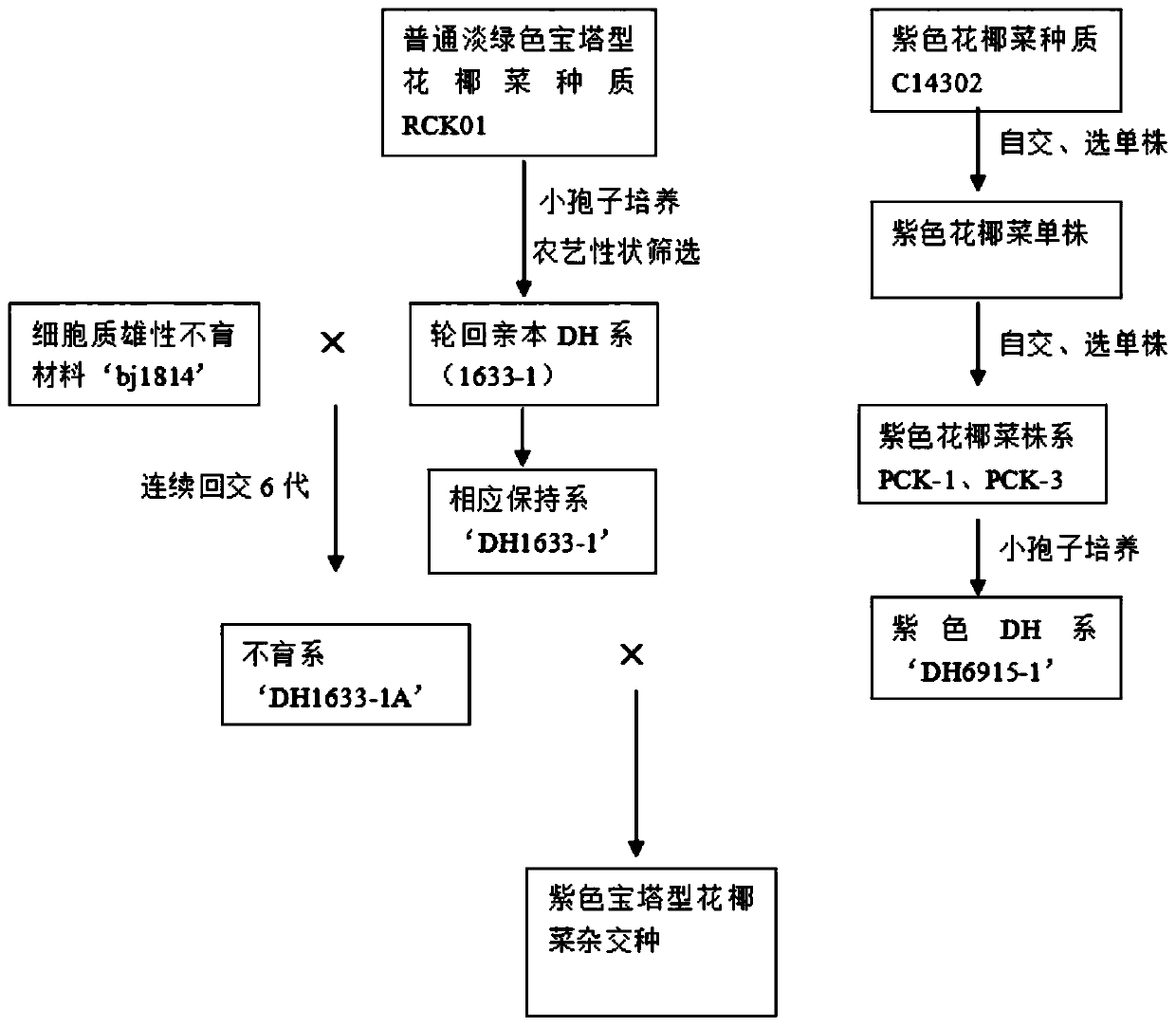Hybrid purple romanesco broccoli breeding method
A pagoda flower and hybrid technology, which is applied in the field of breeding of purple pagoda cauliflower hybrids, can solve problems such as the emergence of no purple pagoda cauliflower varieties or breeding research work, etc., and achieves excellent comprehensive character performance in the field, rich types, and cyanobacteria. The effect of high glycoside content
- Summary
- Abstract
- Description
- Claims
- Application Information
AI Technical Summary
Problems solved by technology
Method used
Image
Examples
Embodiment 1
[0024] Such as figure 1 Shown, present embodiment provides the breeding method of purple pagoda cauliflower hybrid, specifically comprises the following steps:
[0025] 1) Screening and identification of germplasm resources. Since 2010, 7 pagoda-type cauliflower germplasm resources have been collected, and 3 purple cauliflower germplasm resources have been collected since 2013. After field planting, investigation and identification of agronomic traits, 1 ogura cytoplasmic male sterile pagoda-shaped cauliflower and 3 fertile pagoda-shaped cauliflowers, as well as 2 available curd-compact spherical purple cauliflower species were screened out quality.
[0026] 2) Male sterility source selection. The ogura cytoplasmic male sterile pagoda-type cauliflower hybrid, denoted as bj1841, showed normal petals and nectaries, and it was used as a male sterile breeding material.
[0027] 3) Selection and breeding of recurrent parents. Using fertile pagoda-type broccoli hybrids as donor...
Embodiment 2
[0033] Because pagoda cauliflower needs to be cut many times and cultivated over winter, it has a strong winter nature, so parents need to be bred in a greenhouse to prevent the wounds after cutting from being infected by rainwater. Because of the self-compatibility of the recurrent parent, seeds can be obtained through assisted pollination by releasing bees in a separate shed; the male sterile line is planted in a separate shed with a ratio of 1:1 to the male sterile line and the recurrent parent, which needs to be pollinated by releasing bees. Seeds are obtained by backcrossing; the male parent is a self-compatible DH line, and seeds can be obtained by placing bees in a greenhouse.
Embodiment 3
[0035] If the first generation of hybrid species requires a large amount of seed production, it is possible to find a suitable area for isolated seed collection in open-air sun borders. As a special vegetable, under normal circumstances, isolated seed production can be carried out in a greenhouse.
[0036] 1) Choose a planting greenhouse: According to the production area, choose an ordinary plastic greenhouse, glass greenhouse or solar greenhouse. It is best not to plant cruciferous crops in the previous work, or the greenhouse soil has been sterilized. Apply base fertilizer and borax before transplanting.
[0037] 2) Ratio of sowing and planting: the parents raise seedlings and transplant, and plant according to the ratio of female parent: male parent 2:1 or 3:2. Because the growth period of the female parent is about 15 days later than that of the male parent, it is necessary to sow 15-20 days earlier. Taking Hangzhou as an example, the sowing period of the female parent is...
PUM
 Login to View More
Login to View More Abstract
Description
Claims
Application Information
 Login to View More
Login to View More - R&D
- Intellectual Property
- Life Sciences
- Materials
- Tech Scout
- Unparalleled Data Quality
- Higher Quality Content
- 60% Fewer Hallucinations
Browse by: Latest US Patents, China's latest patents, Technical Efficacy Thesaurus, Application Domain, Technology Topic, Popular Technical Reports.
© 2025 PatSnap. All rights reserved.Legal|Privacy policy|Modern Slavery Act Transparency Statement|Sitemap|About US| Contact US: help@patsnap.com

